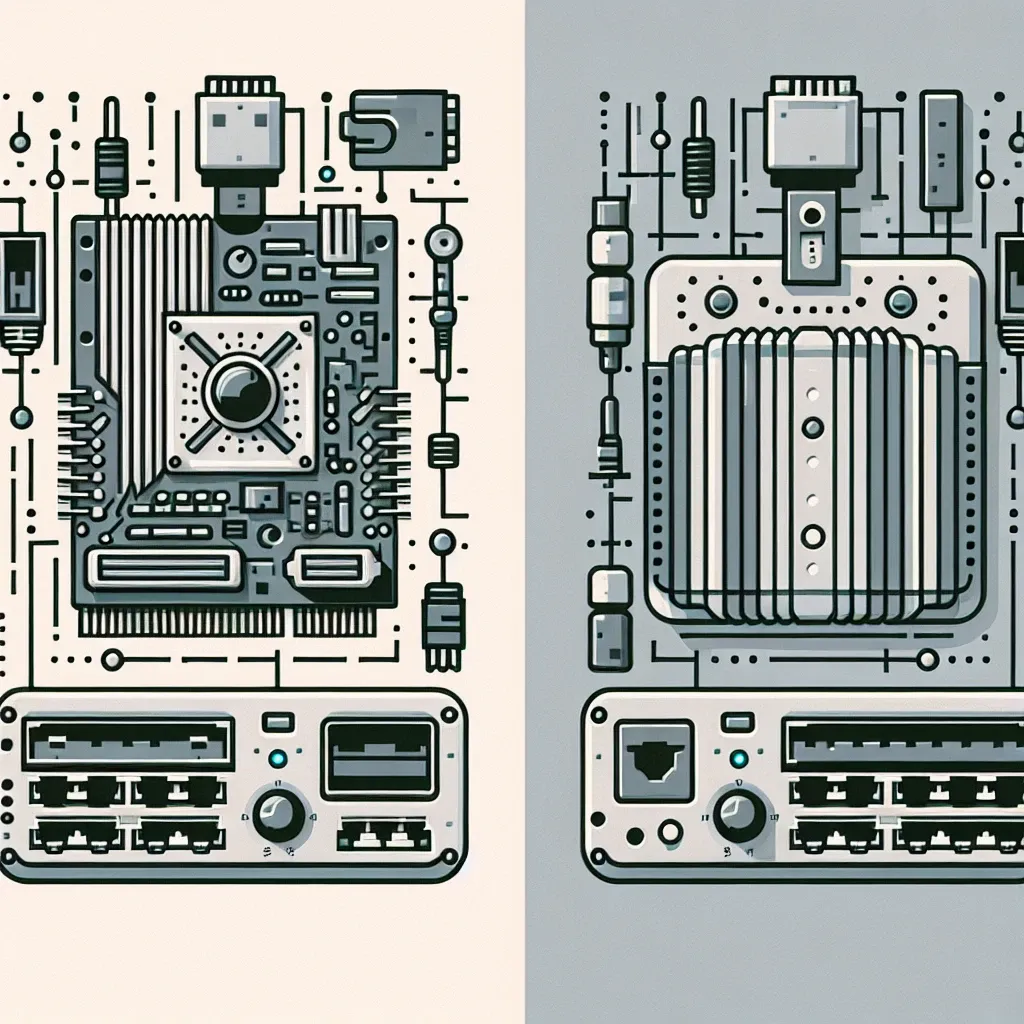Introduction
In the landscape of networking and internet connectivity, understanding the roles of various devices is crucial for both personal and business use. Two essential devices often mentioned are the network adapter and the modem. While they both play pivotal roles in facilitating internet connectivity, they perform vastly different functions. This article dives into the differences between a network adapter and a modem, elucidating their roles, functions, and the contexts in which they are used.
Network Adapter vs. Modem: An Overview
| Feature | Network Adapter | Modem |
|---|---|---|
| Primary Function | Connects a computer to a local network | Connects a local network to the internet |
| Connection Type | Wired or wireless connections within a local network | Converts analog signals to digital, and vice versa |
| Typical Use | Internal communication within a local network | Internet access and connectivity |
| Location in Network | Inside endpoints, like computers or laptops | At the entry point of a local network |
| Key Technology | Network Interface Card (NIC) | DSL, Cable, or Fiber Optics |
What is a Network Adapter?
Definition and Function
A network adapter, also known as a Network Interface Card (NIC), is a hardware component that connects a computer to a local network. It can be either integrated into the motherboard or added as an external device. Network adapters can provide both wired and wireless connectivity, allowing devices to communicate within a local network.
Types of Network Adapters
- Ethernet Adapters: These are used for wired connections and commonly found in desktop computers and laptops. They use Ethernet cables to connect to a router or switch.
- Wi-Fi Adapters: These provide wireless connectivity and are essential for laptops and mobile devices. They connect to wireless routers or access points.
Applications
Network adapters are crucial for internal communication within a business or home network. They enable file sharing, printer access, and other network services. For instance, in an office setting, network adapters allow multiple computers to connect to a central server and access shared resources efficiently.
What is a Modem?
Definition and Function
A modem (short for modulator-demodulator) is a device that converts digital data from a computer or local network into an analog signal that can be transmitted over telephone lines, cable systems, or satellite connections. Conversely, it converts incoming analog signals back into digital data for use by computers and other devices.
Types of Modems
- DSL Modems: These use telephone lines for internet connectivity and are commonly found in residential settings.
- Cable Modems: These use cable television lines to provide internet access, offering higher speeds compared to DSL modems.
- Fiber Optic Modems: These use fiber optic cables for ultra-fast internet connections, typically found in urban areas.
Applications
Modems are essential for providing internet access to a local network. They act as a bridge between the internet service provider (ISP) and the local network, facilitating the flow of data. For example, in a home network, a modem connects to the ISP through a cable or telephone line and provides internet access to all connected devices via a router.
Key Differences Between Network Adapters and Modems
Functionality
The primary difference between a network adapter and a modem lies in their functions. A network adapter enables communication within a local network, while a modem provides internet connectivity to that network.
Location in the Network
A network adapter is typically found inside endpoint devices like computers and laptops. It allows these devices to join and communicate within a local network. On the other hand, a modem is situated at the entry point of a local network, connecting it to the internet.
Technology Used
Network adapters use technologies like Ethernet and Wi-Fi to facilitate local network connections. Modems use a variety of technologies, such as DSL, cable, and fiber optics, to connect a local network to the wider internet.
Conclusion
Understanding the differences between a network adapter and a modem is essential for optimizing your home or business network. While both devices are crucial for network functionality, they serve different purposes and operate using distinct technologies. By recognizing their roles, you can ensure better connectivity, improved network performance, and a more reliable internet experience.

